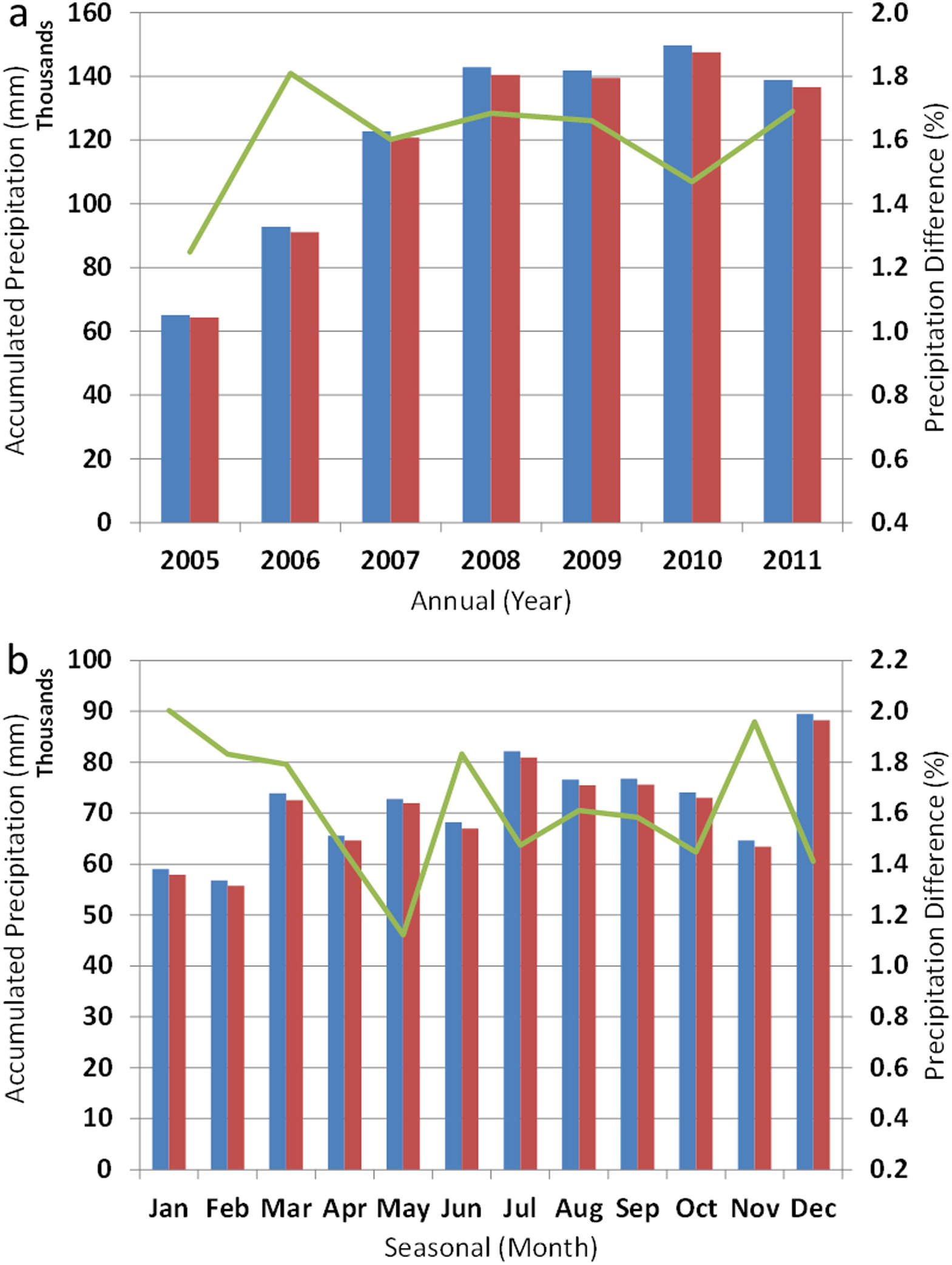
USCRN total precipitation computed using the new weighted average algorithm (blue) and the older pairwise algorithm (red) with percent differences (green) over (a) annual and (b) monthly time scales.
The U.S. Climate Reference Network (USCRN) is a system of more than 130 climate observing stations distributed around the United States. Developed by the National Oceanic and Atmospheric Administration and managed at NOAA’s National Centers for Environmental Information (NCEI), USCRN is designed to provide the nation with high-quality, long-term measurements of temperature, precipitation, soil moisture, and other information critical for understanding changes in the Earth’s climate system.
Thanks to a new mathematical algorithm developed by NCICS’ Ronnie Leeper and his colleagues Michael Palecki and Egg Davis at NCEI, USCRN stations will now provide an even more accurate record of precipitation events across the nation.
In particular, the new algorithm does a better job of capturing light precipitation events and precipitation falling at the beginning of heavier events.
The new algorithm, verification process, and results are described in detail in a paper in the Journal of Atmospheric and Oceanic Technology.
Read more at: http://www.ncdc.noaa.gov/news/uscrn-implements-new-approach-precipitation
